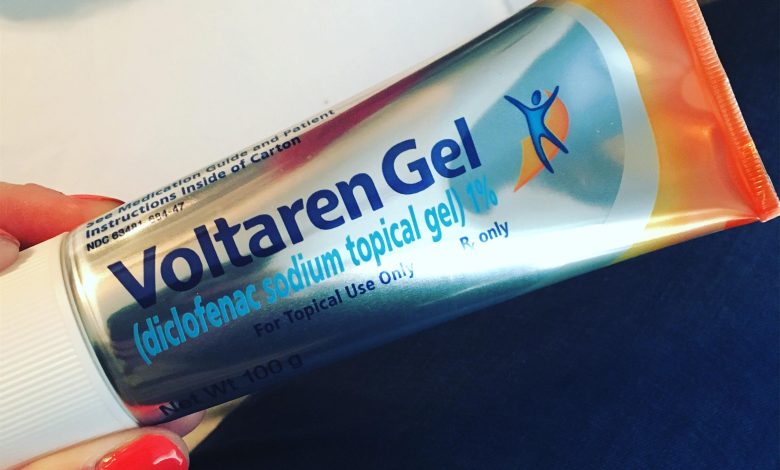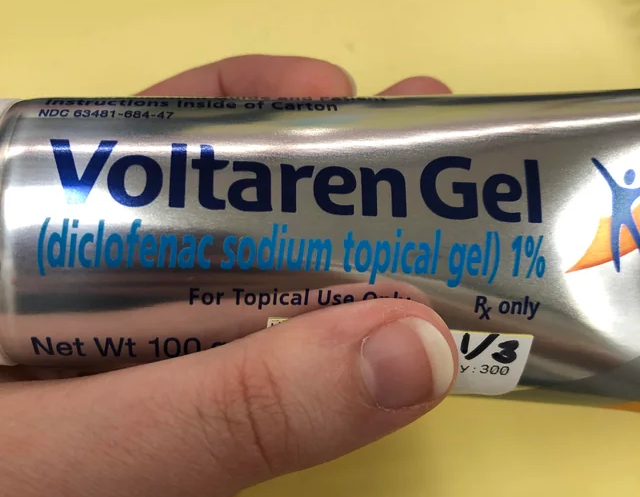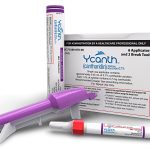How Fast Does Diclofenac Sodium Topical Gel Work?

Diclofenac sodium topical gel is a widely used medication that offers relief from various painful conditions, and its effectiveness makes it a popular choice among healthcare providers and patients alike.
In this article, we will explore what diclofenac sodium topical gel is used for, how long it takes to work, the appropriate application areas, and who should avoid using this medication.
What’s Diclofenac Sodium Topical Gel Used For?
Diclofenac sodium topical gel is a nonsteroidal anti-inflammatory drug (NSAID) that is applied directly to the skin. It is primarily used for the treatment of pain and inflammation associated with musculoskeletal conditions, such as osteoarthritis and rheumatoid arthritis. This topical gel is particularly effective for providing localized pain relief in specific joints or areas, making it a valuable choice for individuals dealing with joint pain, sprains, strains, or injuries.
In addition to its application for joint pain, diclofenac sodium topical gel has shown efficacy in reducing pain associated with conditions like tendinitis and bursitis. It can also be used for other pain-related issues, but it’s essential to follow the guidance of a healthcare provider regarding the specific use and dosage.

How Long Does it Take for Diclofenac Sodium Topical Gel to Work?
The time it takes for diclofenac sodium topical gel to provide relief can vary from person to person and depends on the severity of the pain and the individual’s response to the medication. However, many users report experiencing a noticeable reduction in pain within 1-2 days of starting treatment but may take up to 7 days to work for your arthritis pain. It’s important to keep in mind that diclofenac sodium topical gel works locally, at the site of application, and may not provide immediate relief. It usually requires consistent and regular use over a period of time to achieve its maximum effectiveness.
Patients are advised to follow the dosing instructions provided by their healthcare provider and use the gel as directed to optimize its pain-relieving benefits. If there is no improvement after a few weeks of use, it is important to consult a healthcare professional for further evaluation and potential treatment adjustments.
Where Do You Apply Diclofenac Sodium Topical Gel?
Diclofenac sodium topical gel is designed for external use on the skin. The specific application area depends on the painful condition being treated. Typically, it is applied directly to the affected joint, muscle, or area of pain. Here are some key points to consider:
1. Hands-On Approach: Always wash your hands thoroughly before and after applying the gel. This prevents the accidental transfer of medication to other parts of the body.
2. Clean and Dry Skin: Ensure that the skin where the gel is applied is clean and dry to optimize absorption.
3. Avoid Sensitive Areas: Avoid applying the gel to open wounds, mucous membranes, or areas with broken or irritated skin. Do not use it on the face, eyes, mouth, or genital area.
4. Dosing Guidance: Follow the dosing instructions provided by your healthcare provider, as the amount and frequency of application may vary based on the condition being treated.
5. Do Not Bandage: Do not cover the area with bandages or occlusive dressings after applying the gel, as this can increase the risk of side effects.
Who Should Not Use Diclofenac Sodium Topical Gel?
While diclofenac sodium topical gel is generally considered safe and effective for many people, there are certain individuals who should avoid using it. These include:
1. Allergic Reactions: If you have a known allergy to diclofenac or other NSAIDs, you should not use diclofenac sodium topical gel. Allergic reactions can range from skin irritation to more severe reactions, and immediate discontinuation is essential.
2. Aspirin Allergy: Individuals with a known allergy to aspirin should also avoid using diclofenac sodium topical gel, as it may trigger similar allergic responses.
3. Pregnant or Nursing Women: Pregnant women in their third trimester and nursing mothers should generally avoid using diclofenac sodium topical gel, as there may be potential risks to the developing fetus or the nursing infant.
4. Open Wounds or Skin Conditions: Do not apply the gel to open wounds, infected areas, or irritated skin. It’s important to ensure the skin is intact and healthy before application.
5. Gastrointestinal Issues: If you have a history of gastrointestinal problems or ulcers, it’s advisable to use caution or consult with a healthcare provider before using this medication, as systemic absorption may still occur.
6. Children: Diclofenac sodium topical gel is not typically recommended for use in children under the age of 18, as its safety and efficacy in this age group have not been extensively studied.
It’s crucial to consult with a healthcare provider before using diclofenac sodium topical gel, especially if you have underlying medical conditions, are taking other medications, or are unsure whether it’s safe and suitable for your specific situation. Always follow the instructions provided by your healthcare professional for the best results and to minimize any potential risks associated with the use of this medication.
How Effective Is Diclofenac Sodium Topical Gel Treatment For Actinic Keratosis
The effectiveness of treating actinic keratosis with diclofenac sodium topical gel can vary from person to person and depends on several factors, including the severity of the condition, the patient’s individual response to the treatment, and the consistency with which the medication is used. Actinic keratosis is a precancerous skin lesion caused by long-term sun exposure and is often characterized by rough, scaly patches on the skin. Diclofenac sodium topical gel, under the brand name Solaraze, is one of the treatment options for actinic keratosis.
Diclofenac is thought to work by reducing inflammation and promoting the body’s immune response to help eliminate the abnormal skin cells that make up actinic keratosis. Here is what you should know about the effectiveness of treating actinic keratosis with diclofenac sodium topical gel:
1. Variable Response: Some individuals with actinic keratosis may respond very well to diclofenac sodium topical gel, with a significant reduction in the number and appearance of actinic keratoses over time. Others may have a more variable or less robust response.
2. Mild to Moderate Actinic Keratosis: Diclofenac sodium topical gel is generally more effective for mild to moderate cases of actinic keratosis. It may be less effective for more advanced or severe cases.
3. Consistent Use: To achieve the best results, it’s important to use the gel consistently as directed by a healthcare provider. Typically, it is applied twice daily to the affected areas for several weeks to months.
4. Patient Monitoring: Regular follow-up appointments with a dermatologist are essential to monitor progress and make any necessary adjustments to the treatment plan. Sometimes, multiple cycles of treatment may be required.
5. Combination Therapy: In some cases, diclofenac sodium topical gel may be used in combination with other treatments, such as cryotherapy (freezing), to enhance its effectiveness.
6. Prevention: It’s important to continue practicing sun protection measures, such as wearing sunscreen and protective clothing and avoiding excessive sun exposure, as actinic keratosis can recur or progress to skin cancer in some individuals.
The effectiveness of diclofenac sodium topical gel for actinic keratosis has been demonstrated in clinical studies, and it is an approved treatment option for this condition. However, as with any medical treatment, individual responses can vary. Some individuals may find diclofenac sodium topical gel to be an effective and convenient option for managing actinic keratosis, while others may benefit from different treatment approaches. If you have concerns about actinic keratosis or are considering diclofenac sodium topical gel as a treatment, it’s crucial to consult with a dermatologist who can evaluate your specific case, discuss the benefits and potential side effects, and recommend the most suitable treatment plan for you.





